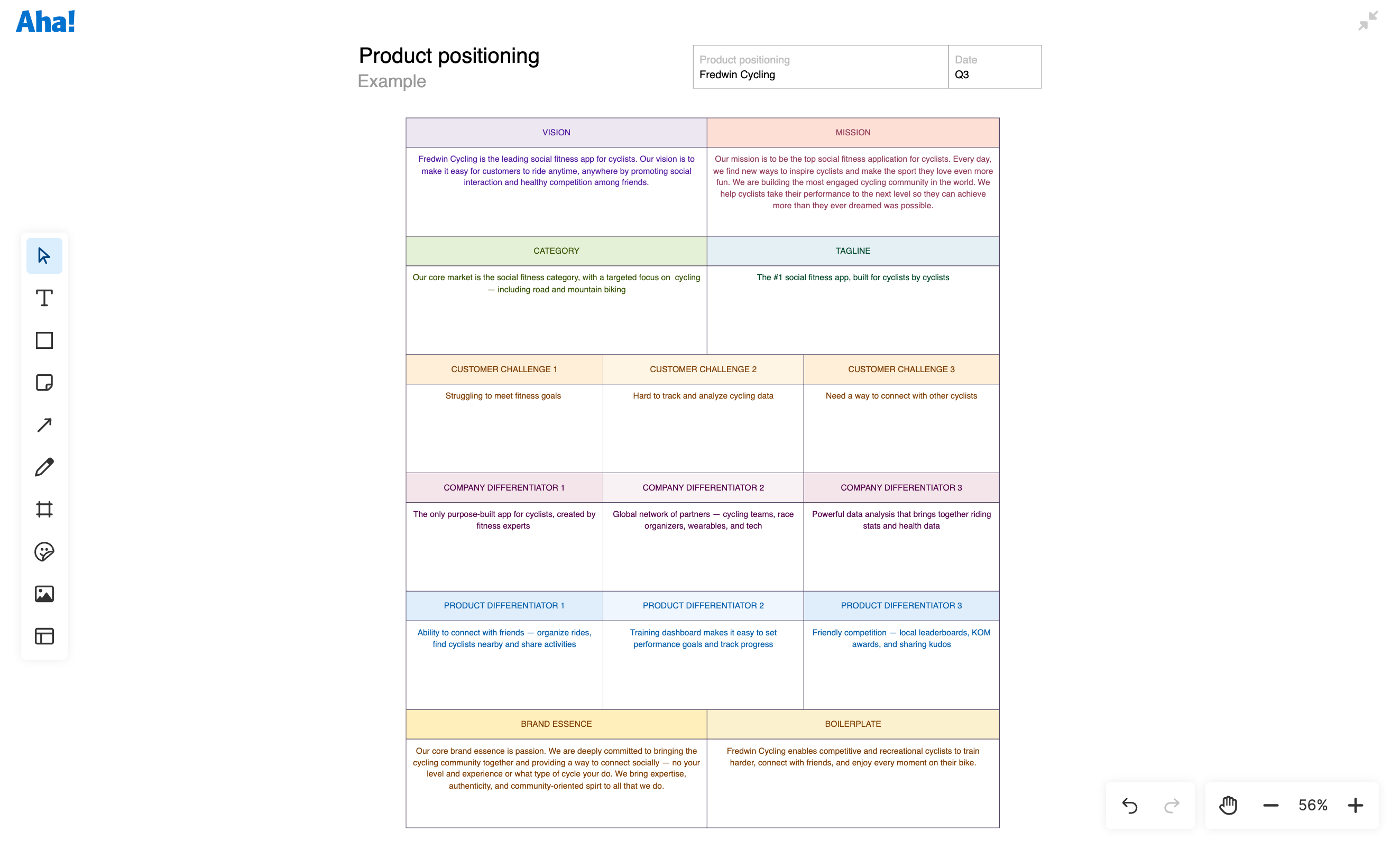Product positioning: Tips, templates, and examples
Everything you need to know to create a strong product positioning statement
Last updated: October 2025
What is product positioning, and how do you create it? Learn how clear positioning defines your product's value, target audience, and competitive advantage to guide messaging and strategy. |
Your ability to articulate the key benefits of your product and the problem it solves is critical to business success. But you may find yourself in a company where product positioning strategy is not well-defined.
Maybe this is because there is unclear ownership or an ever-changing vision. Dig deeper and you may realize that you can lead a collaborative effort to fine-tune the positioning. Your colleagues in sales and marketing will likely be strong advocates of this work — effective positioning makes it possible to craft meaningful messages and create even more value for customers.
Define your positioning in Aha! Roadmaps — start a trial.
Explore any section below:
What is product positioning?
Product positioning is a strategic exercise that defines where your product or service fits in the marketplace and why it is better than alternative solutions. The goal is to distill who your audience is, what they need, and how your product can uniquely help. Product positioning is the basis of your marketing story.
The outcome of product positioning is an internal document that informs external messaging — including how you will communicate product benefits to customers. Positioning helps ground your product marketing efforts in the real value you provide beyond features and functionality.
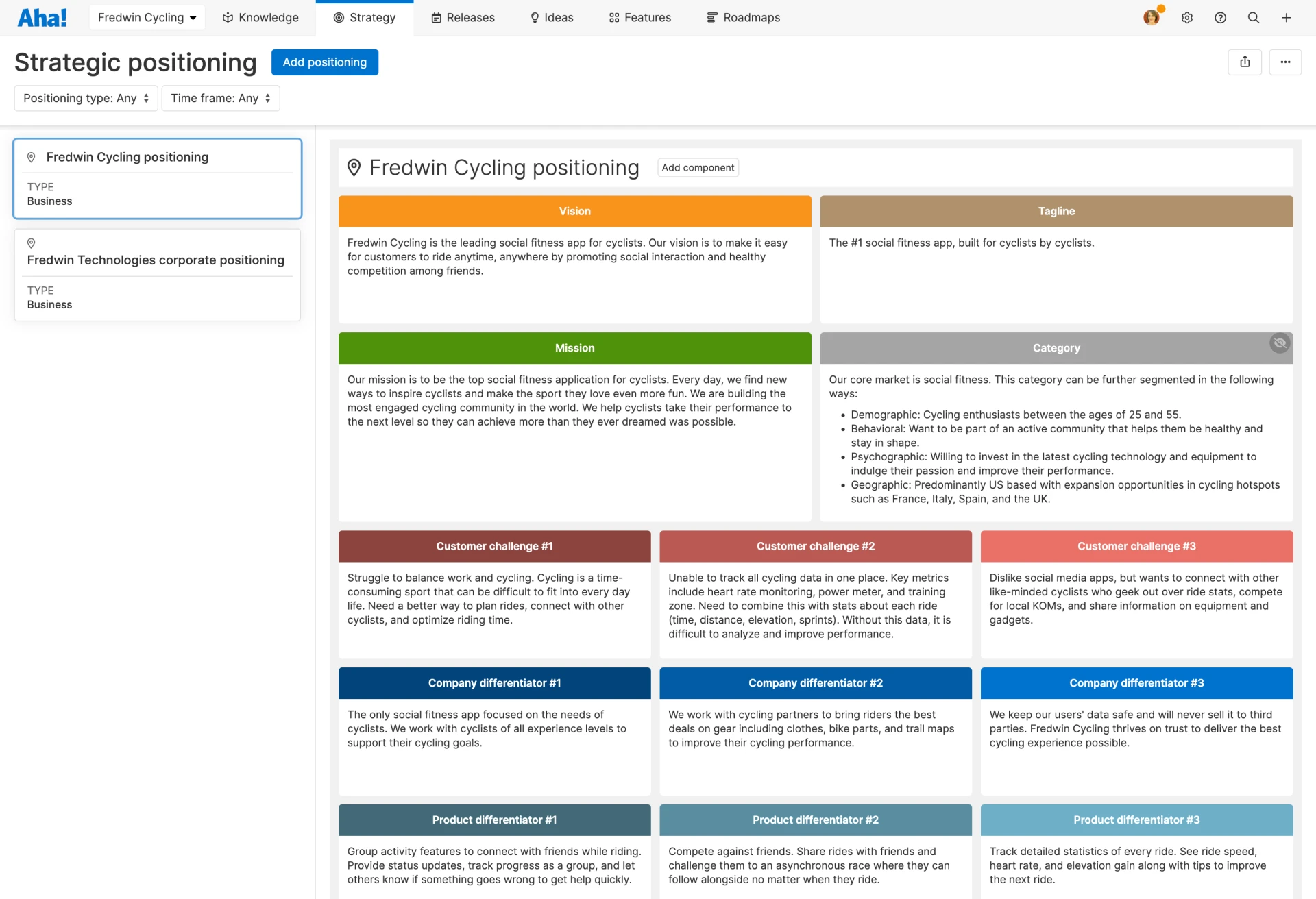
What is the best way to develop product positioning?
Product positioning is a cross-functional exercise. It typically involves product management and product marketing working closely together to define the core essence of your product. You will need to bring together your knowledge of the following areas:
Understand the customer
Your positioning strategy should succinctly capture who your customers are and what they need. Describe the attributes of your target customers, including demographic, behavioral, psychographic, and geographic details. You will also want to provide insights into the main problems the customer is trying to solve. Use your persona profiles to inform your positioning strategies and help the broader team build empathy with your customers.
Want to learn more about uncovering insights from customers? Check out the tutorial below, led by Aha! product experts Kelly Sebes and Maria Plotkina:
Read more
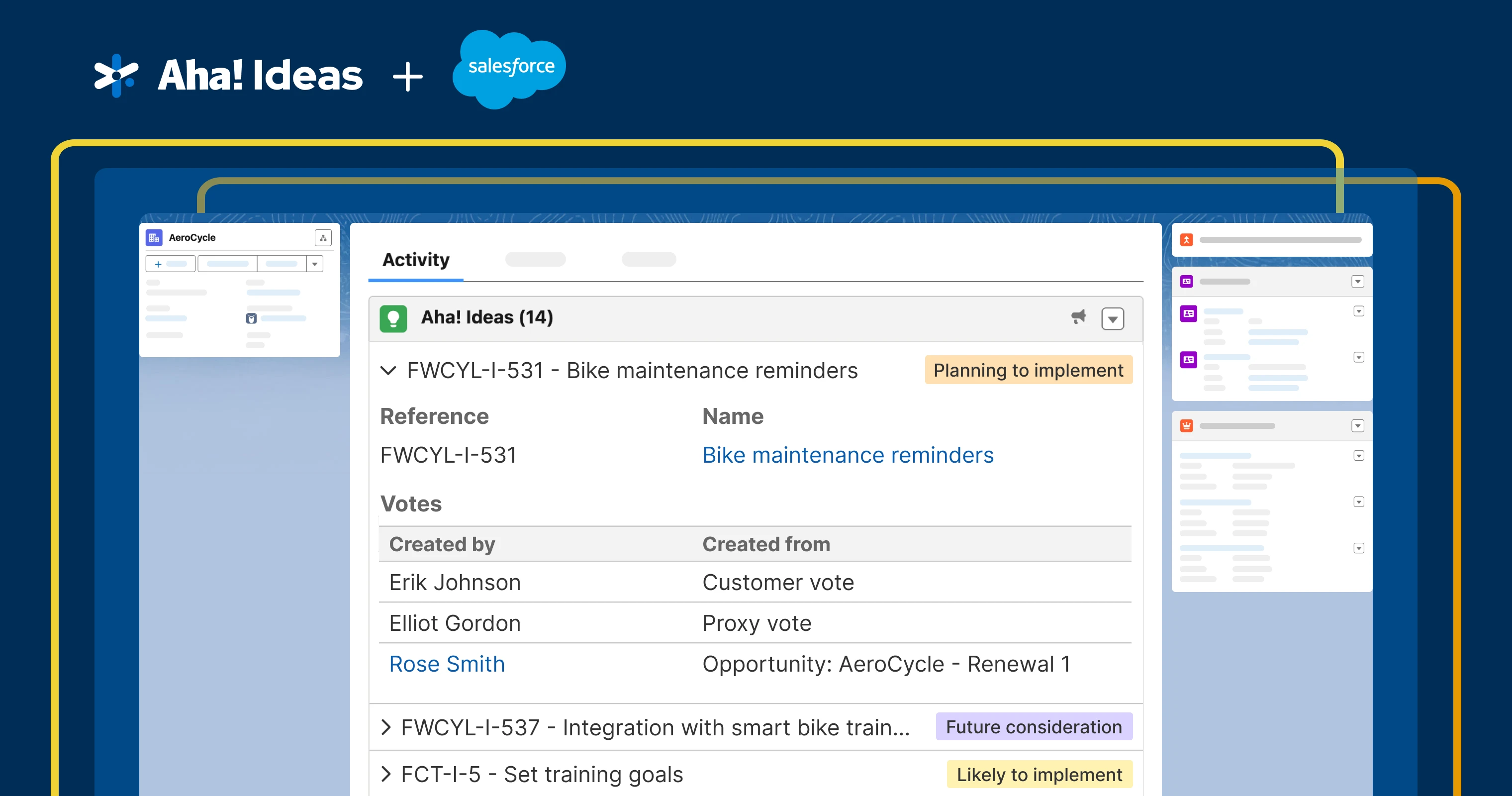
What is roadmap software? Key features of roadmap tools
How do you build a successful product? It starts with a breakthrough idea to solve a real problem.
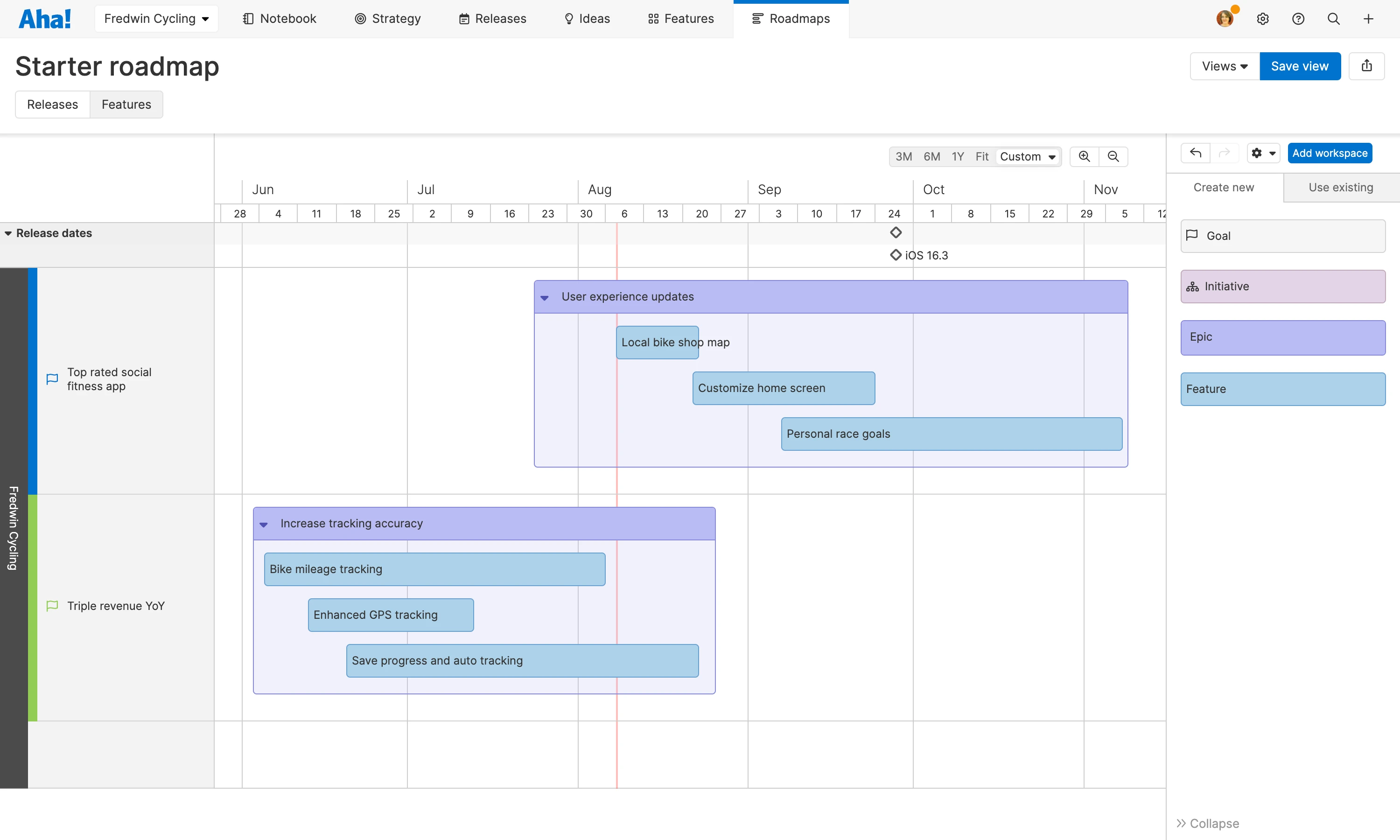
Use our product roadmap template
Show the direction of your product and the work needed to turn product vision into reality
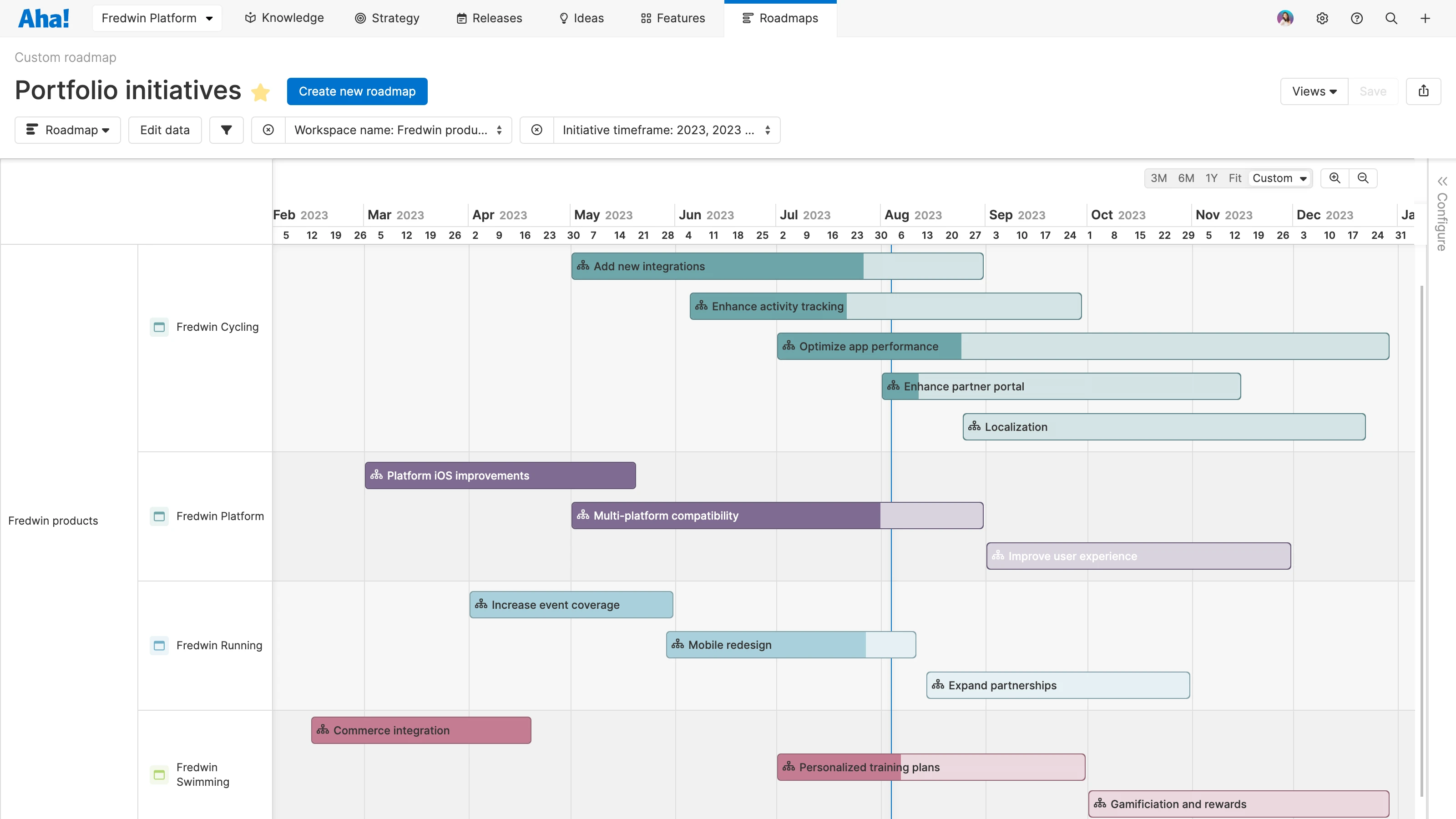
What's new with Aha! Roadmaps?
Learn about the latest enhancements and new functionality available in Aha! Roadmaps.
